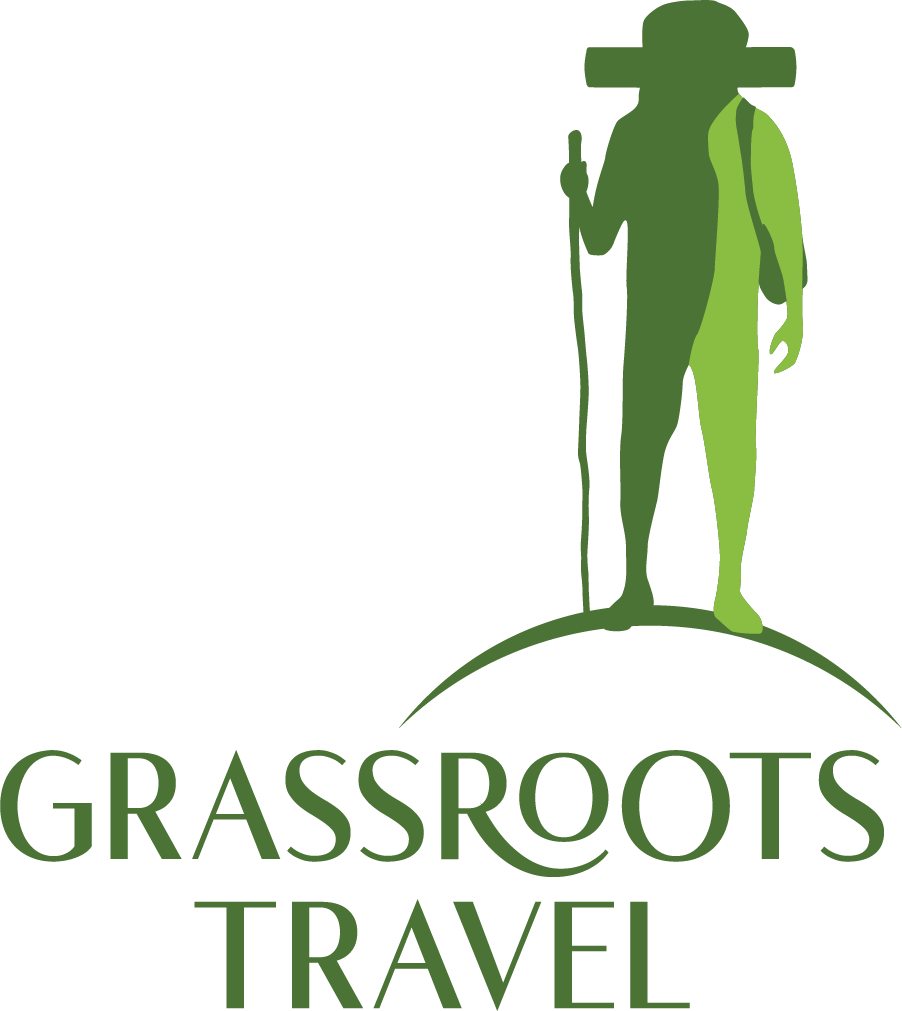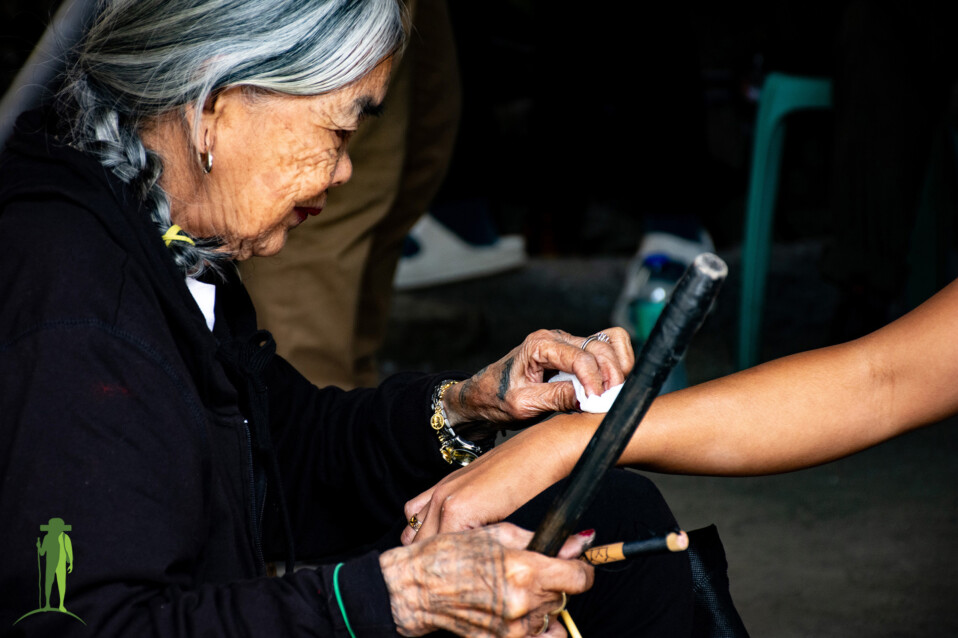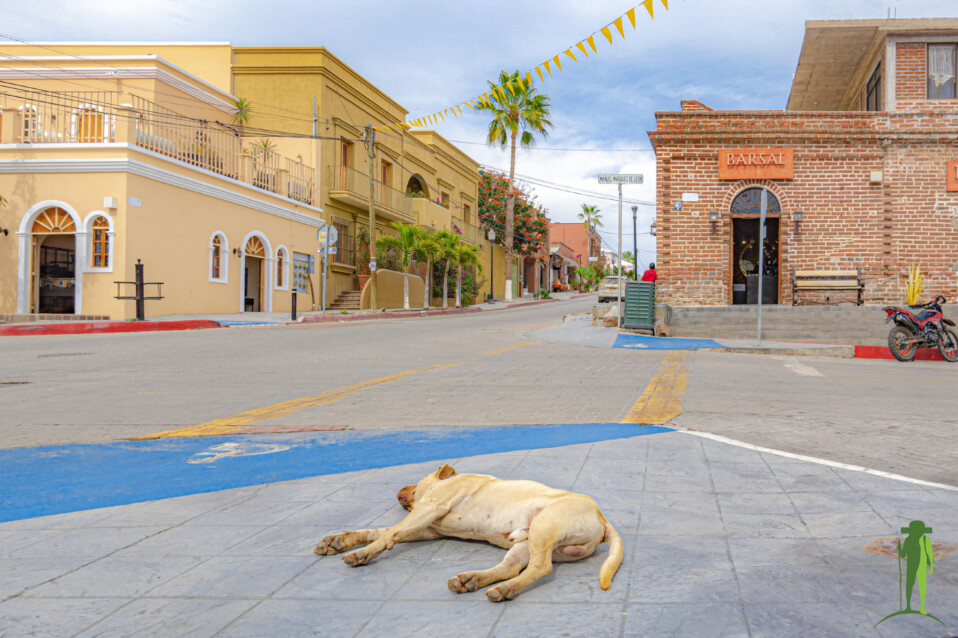Seoul-ed Out:
10 Less Touristy Alternatives to Top Things to Do in Seoul
January 20, 2025
by Tanya
10- to 18-minute read
Just like most travelers, we entered South Korea through Incheon International Airport, which is approximately 50 km west of Seoul. After settling in to our share-house in Jongno district, we mapped out our itinerary for the next four days. We don’t enjoy being in crowded places, so we intentionally excluded touristy areas from our list of things to do in Seoul:
#1. Get a Bird’s Eye View from N Seoul Tower in Namsan Park
A radio tower built on the summit of Namsan Mountain in Central Seoul, N Seoul Tower is considered a local landmark. The observation tower provides spectacular views of most of the city. Visitors usually ride the Namsan Cable Car up to Mount Namsan, then take the obligatory photo stop at the thousands of love padlocks attached to the fence at the base of N Seoul Tower before going up the tower itself.
WHAT WE DID:Enjoyed a Great View of N Seoul Tower From the National Museum of Korea
We considered visiting N Seoul Tower while we were looking for things to do in Seoul. However, we quickly discarded that notion after reviewing car and subway traffic data. We didn’t want to deal with a crush of people on the train or when we get to this popular tourist attraction.
Instead, we learned about South Korea’s tumultuous past at the National Museum of Korea, which had an unobstructed view of N Seoul Tower from its open plaza. Admission is free except for special exhibitions. It is open daily with entry to the museum restricted 30 minutes before closing time.
We didn’t feel the need to visit the War Memorial of Korea, another top Seoul attraction, after our visit to the museum.
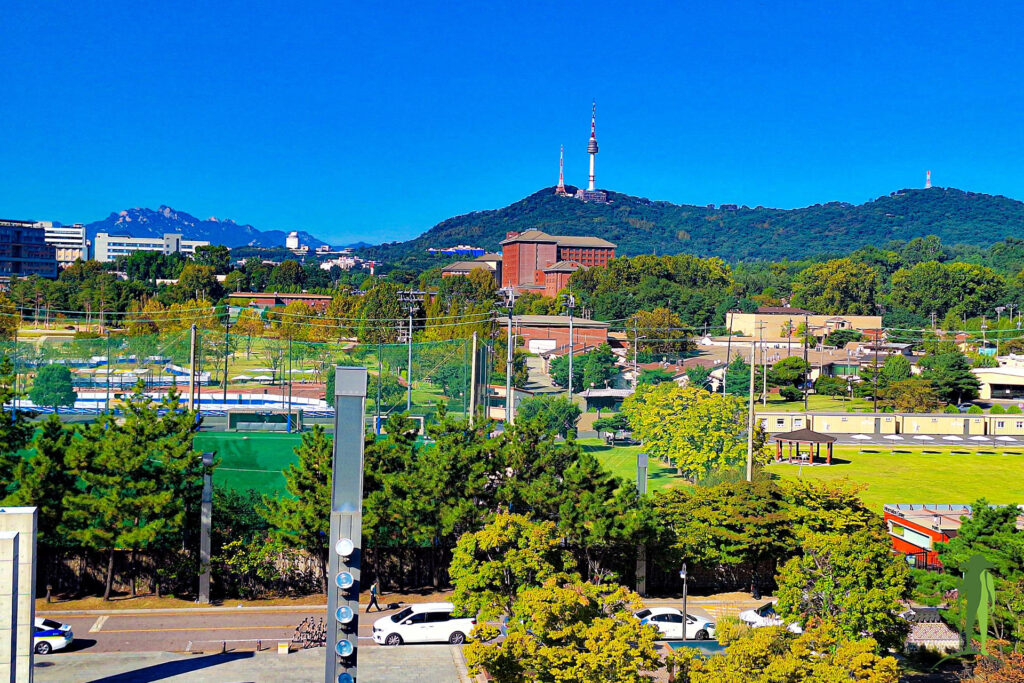

#2. Go Gaga in Gangnam
Gangnam district is an affluent area located south of the Han River that is teeming with shopping malls, designer stores, and high-end dining places. If you like books, Starfield COEX Mall in Gangnam-gu is home to a visually impressive library that has become famous on social media. It’s so busy now that you’d have to be ready to pounce and claim your seat when one becomes available.
And who hasn’t listened to “Gangnam Style” at least once? There is a statue of singer Psy’s golden hands doing the song’s signature move at the mall entrance. You can have your photo taken while you dance to the musical hit, which automatically plays when you stand under the humongous metal structure.
WHAT WE DID:Experienced Cultural Diversity in Itaewon
Since we were neither curious nor had any aspirational reasons to go to Gangnam, we decided to see where the cultural minority lived. Itaewon, which served as the main commercial area for the US Army base that was established in Yongsan district when the Korean War ended, observed an influx of foreign workers from Africa and the Middle East in the early 1990’s. Over the years, as Incheon International Airport became a gateway to Asia from the rest of the world, the number of foreigners visiting and settling in Itaewon has dramatically increased.
A visit to this multi-cultural neighborhood engages all your five senses. Not only does Fashion Street host famous brand names, low-budget imported wear are also on display in the assorted clothing shops that line the alleys of Itaewon-dong’s major shopping street. Find yourself enveloped in enticing aromas as you choose between Indian or Thai, halal or kosher. Many restaurants boast authentic dishes prepared by native cooks, taking customers on a gastronomic journey around the world. Listen to loud voices and even louder music spilling out of the various nightclubs in the alleyways. As the night grows longer and the atmosphere turns more festive, don’t be surprised when random people become friendlier and happy strangers, more affectionate.
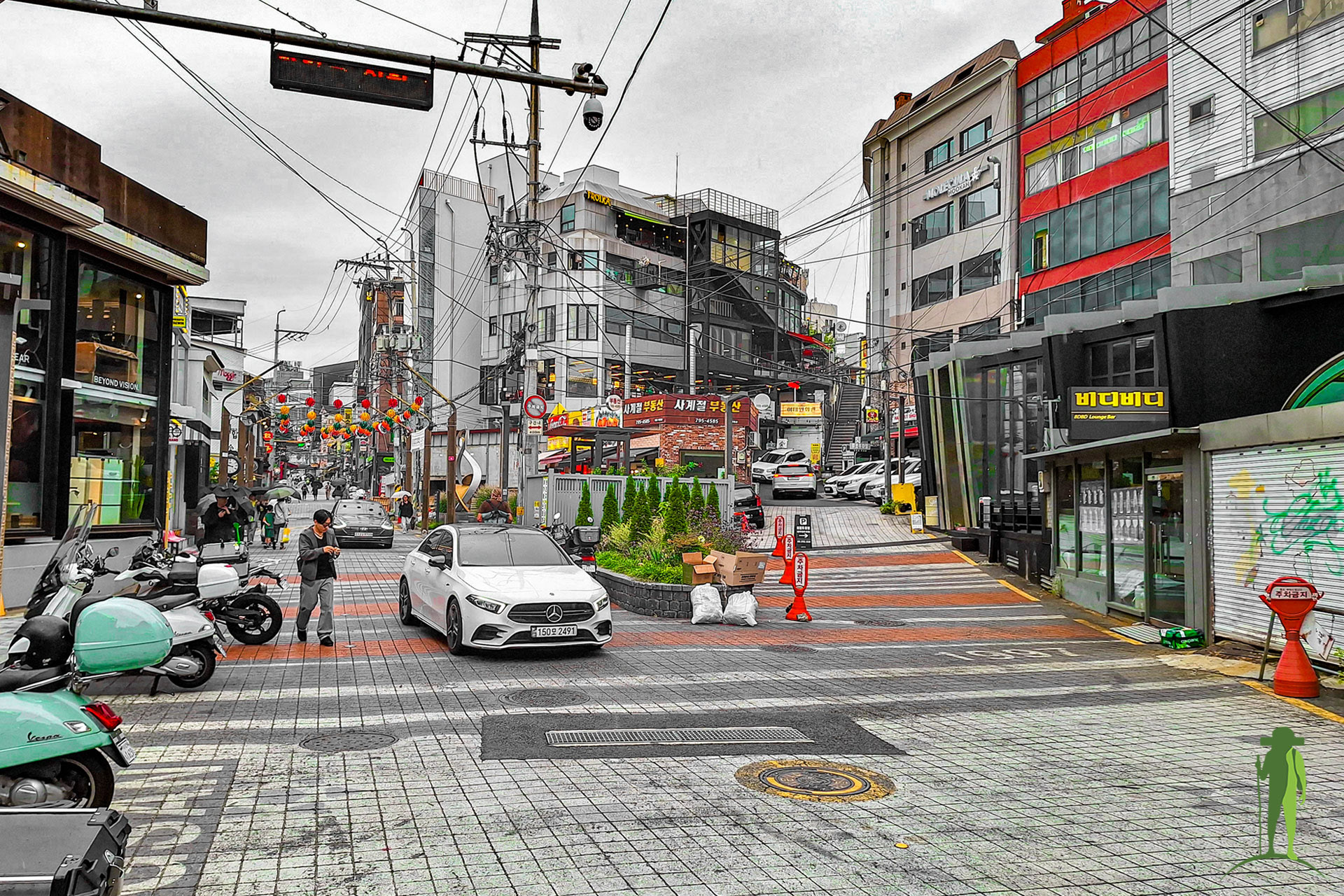
#3. Wear a Hanbok at Gyeongbokgung
Korean period dramas often revolve around the Joseon dynasty, which was founded by King Taejo in 1393. They show the king wearing the royal dragon attire, the nobility in fine hanbok, the working class in muted wear, and the commoners in rough traditional garb. Koreans have worn hanbok, which literally means “Korean dress,” since antiquity. Nowadays, contemporary Koreans observe this tradition on formal or semi-formal occasions, and during special events.
Gyeongbokgung (Gyeongbok Palace) is the largest of the five grand palaces constructed during the Joseon period and is a great venue for taking those Instagram-worthy shots of you in a hanbok. You can rent your outfit of choice from one of the many rental shops gathered around major tourist spots. Your rental comes with a free admission to the palace as long as you have it on when you visit.
If you arrive in the morning, don’t forget to watch the changing of the guard that takes place from 10 AM to 2 PM every day except Tuesdays.
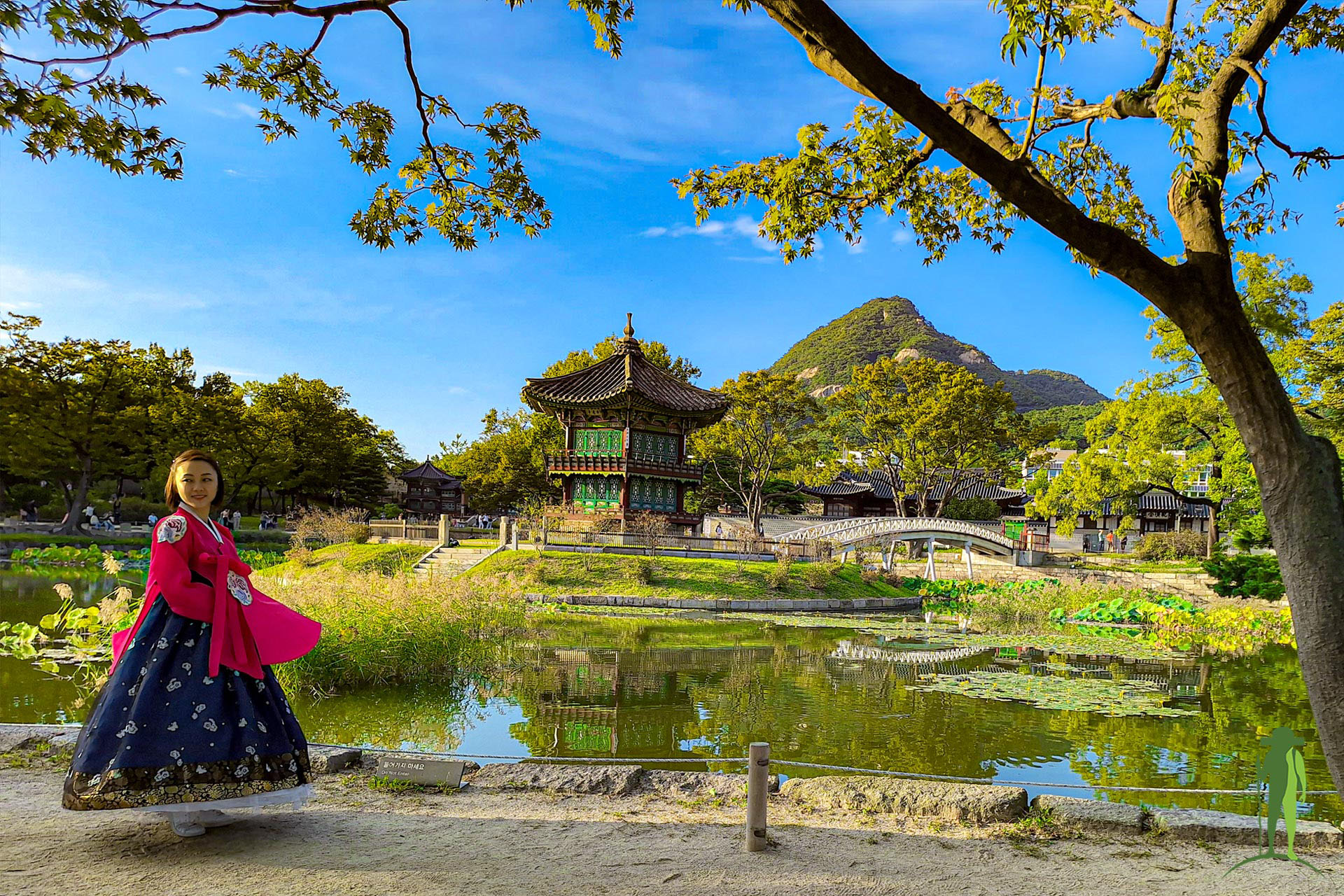
WHAT WE DID:Visited Gyeongbokgung Just Before Closing and Photo Op-ed With a Mexican Tourist
Since it was only a 10-minute walk from our share-house to Gyeongbokgung, we chose to go 2 hours before closing to avoid the crowds. It was the perfect time to visit because there were less people and the lines were shorter. Moreover, the afternoon light was ideal for photography.
We didn’t go through the trouble of dressing ourselves in traditional attire. There wouldn’t have been any rental hanbok available in Sten’s size anyway. And I’m still wondering if a wig comes with the dress in place of a free hair arrangement for short-haired women… We were content to take pictures of the happy tourists inside the palace.
Meanwhile, we see a sombrero sticking out like a sore thumb in a sea of hanbok. A gentleman from Auguascalientes, Mexico was touring Seoul with his family. He had been taking souvenir photos of himself in traditional costume while displaying the Mexican flag at major tourist attractions. Now that’s nationalistic.

#4. Take a Stroll Around Bukchon Hanok Village
Hanok are traditional Korean houses that were first built during the Joseon dynasty. Clay, timber, and rock are the raw materials used in constructing a hanok. Since Korea has hot summers and cold winters, a floor heating system (ondol) and a hall with a wooden floor (daecheong), were devised long ago to help Koreans survive the frigid winters and to regulate the interior temperature during summer.
During the period immediately after the Korean war, several hanok of historical value were demolished. In the larger cities of South Korea, only small clusters of hanok remain. Bukchon Hanok Village is one those residential neighborhoods with many restored hanok and has become a popular tourist spot. Visitors like to capture the historic houses juxtaposed against the modern skyscrapers in the heart of Seoul.
WHAT WE DID:Walked Around Our Neighborhood and Identified Traditional Korean Houses
Since Bukchon Hanok Village is an area where people actually live, consideration must be observed when visiting. Due to the increasing number of tourists flocking here, some locals have taken to social media to air their displeasure, while a number of residents have put up signs on their walls instructing tourists to keep the noise level down.
While a well-preserved traditional neighborhood in the middle of Seoul may be a fascinating sight, we didn’t want to intrude on the daily lives of the locals. Walking around our small neighborhood, we could still see hanok interspersed among the concrete buildings. We even found one that had been converted into a community center. Since it was open to the public, we were able to go in and explore without bothering any of the residents.
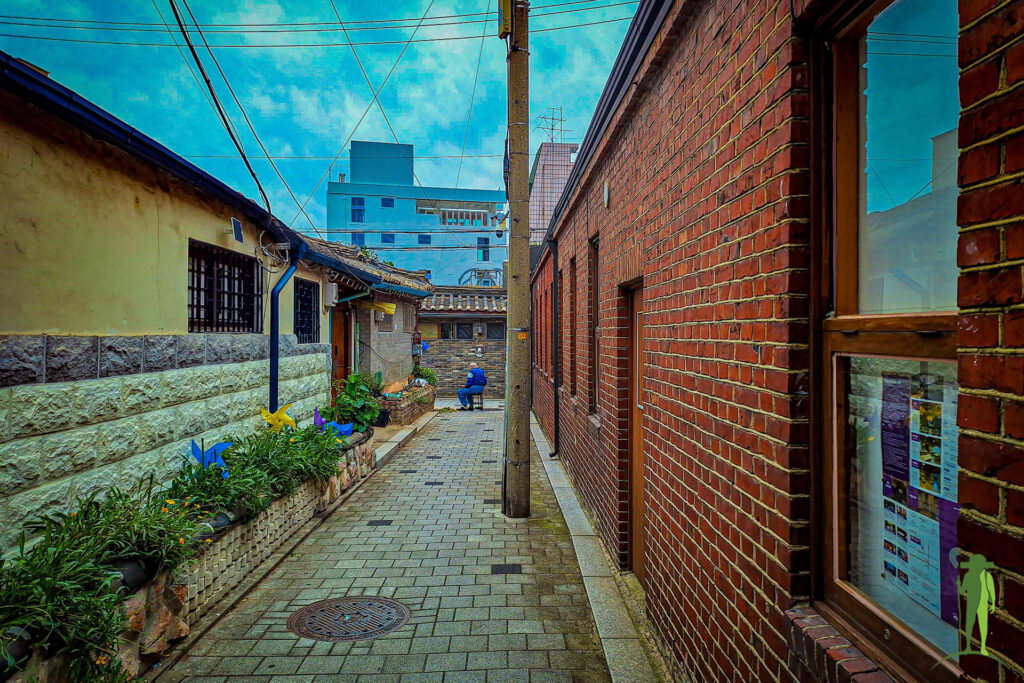
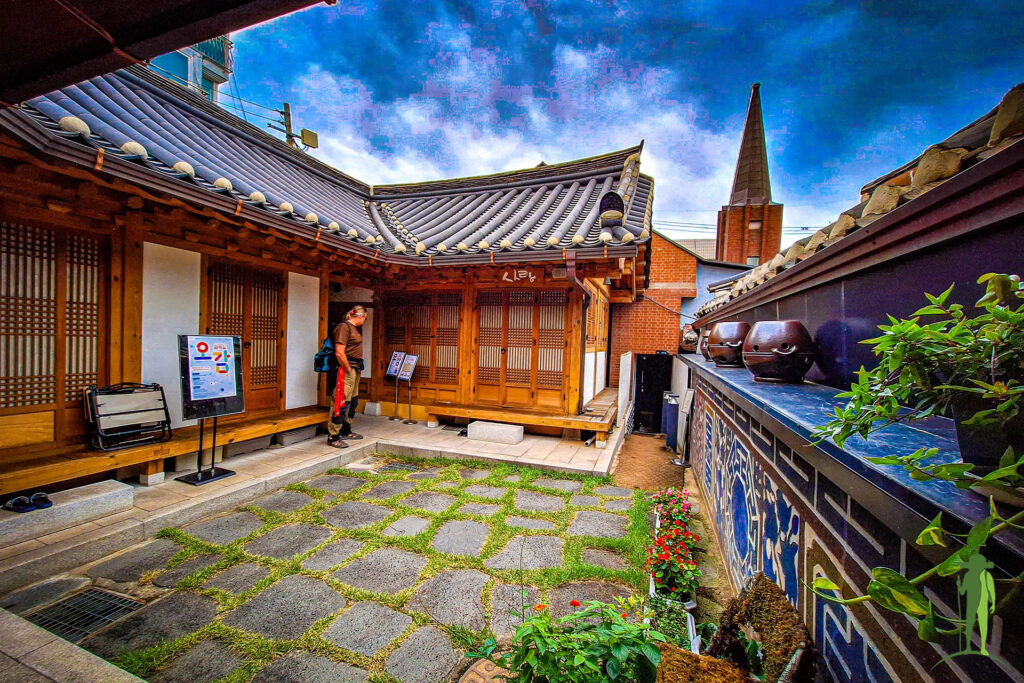
#5. Check Out the Day’s Produce in the Traditional Markets
Inside Korea’s traditional markets, you will find stores selling live seafood, fresh meat, fruit and vegetables, kimchi and sauces, dry goods, and other items. Some markets provide an excellent mix of the traditional and trendy, where stalls selling Korean sweets and snacks stand side-by-side with cafes and patisseries. Expect to go on a gastronomic tour when you visit sites like Gwangjang Market, which was made famous by a popular Korean variety show.
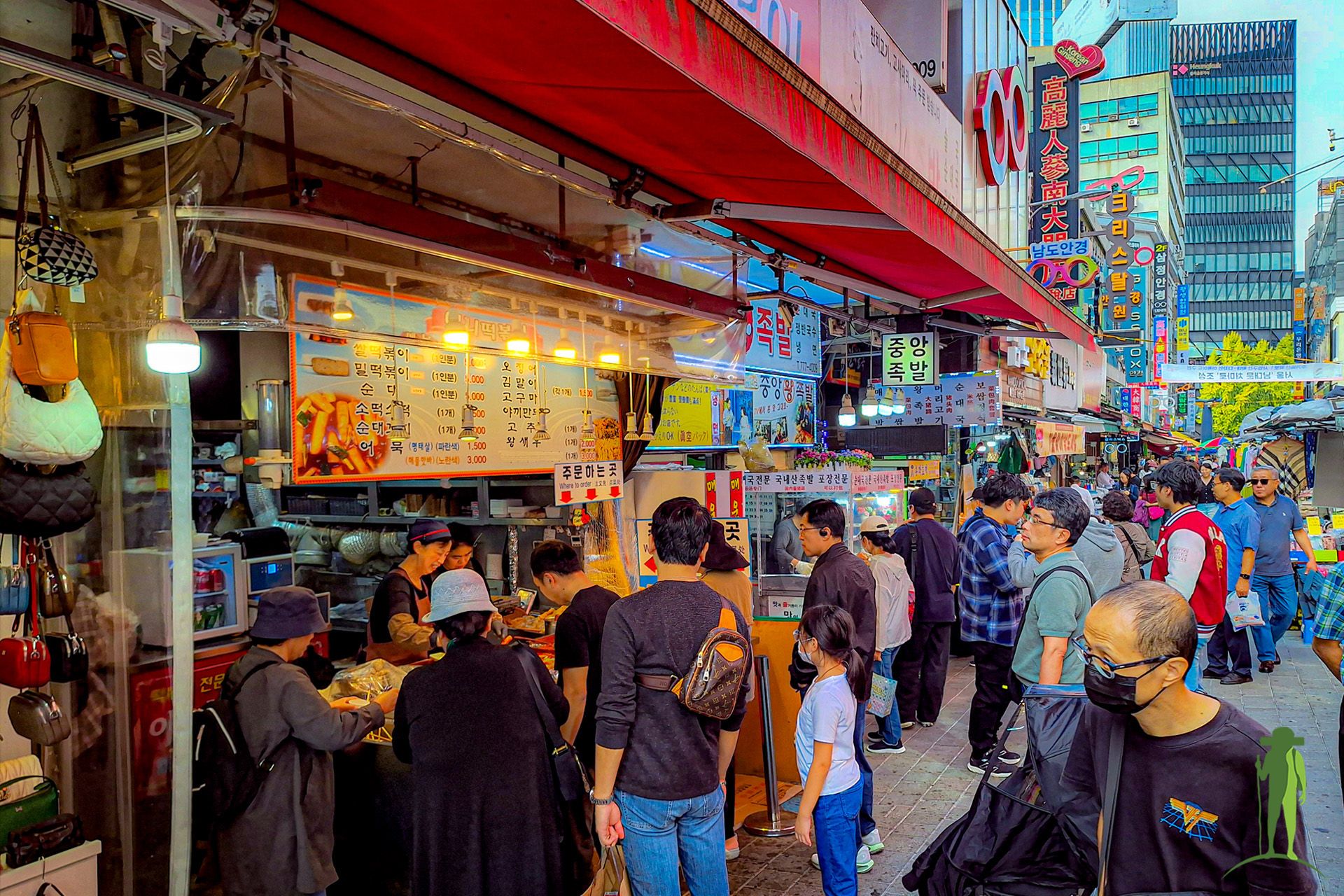
WHAT WE DID:Bought Practical Items at Namdaemun Market
Before Gwangjang Market, there was Namdaemun Market. Having opened as a government-chartered market during the Joseon period, it is now more than 600 years old and still going strong as one of the biggest traditional markets in Seoul. It is situated in a neighborhood near the old south gate of Seoul, hence the name “Great South Gate Market.”
Boasting more than 10,000 stores and about 1,700 main trades, you can find items ranging from jewelry, clothing, textile, and imported goods to kitchen essentials, flowers, and crafts. There are specialized streets and alleys for cameras, eyewear, military equipment, stationery, noodles, cutlassfish, and of course, souvenirs. It is also a wholesale market for 3 to 4 hours around midnight, when retailers come from all over the country to replenish their stocks.
I wanted to purchase a ceramic stew pot for making kimchi jjigae (kimchi stew), so we went inside one of the specialty malls and navigated through the numerous aisles until we reached the kitchenware department. On the way, we saw premature Christmas ornaments, lamps of all shapes and sizes, various knick-knacks, and traditional souvenirs. We circled back for the latter after we had found the perfect pot and paid for it.
THEN:Ordered a Local Lunch in Cutlassfish Alley
It was time for lunch. We looked into one of the alleys and decided to take a chance. We had entered cutlassfish alley. There was a queue at each place, so we must have caught the lunch-hour rush. A table freed up and it was finally our turn. With my 10-word Korean vocabulary accompanied with plenty of hand gestures and a pointy index finger, we were able to order off a menu board on the wall. I think they tried to tell us that we needed to order more food (see my other post on Korea’s food culture), but gave up when we couldn’t comprehend what they were saying.
The patrons were mostly locals, save for one foreigner who ordered food to go. Newcomers did a double-take at the door, finding it very unusual to find a tall Caucasian sitting at a table in a tight corner of the tiny place. They are more used to seeing Filipinos, so they didn’t spare me a glance. Everyone engaged Sten in conversation, even the ones from two tables over. One lady took the trouble to show him how to use the dried algae sheets that came with our order.
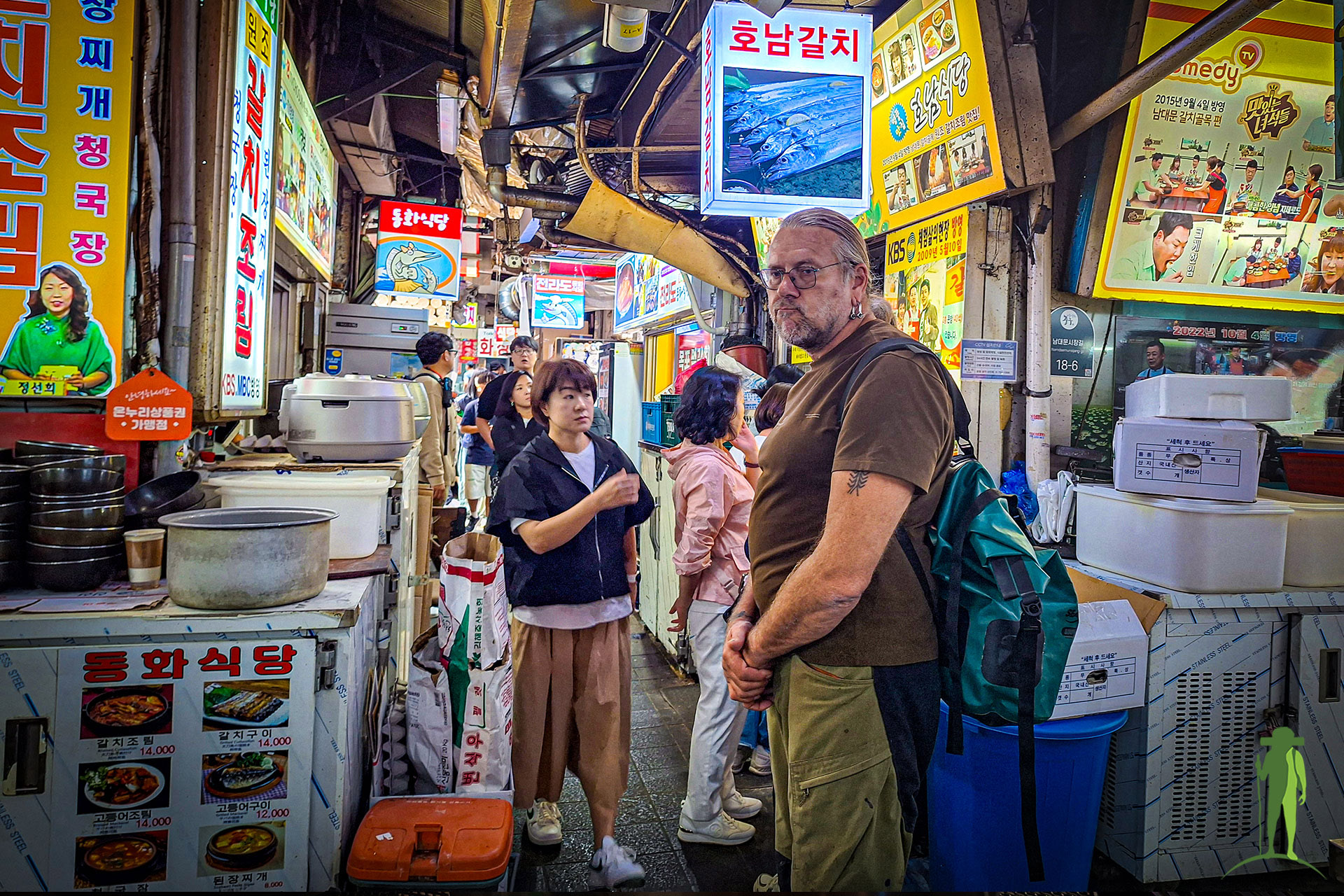
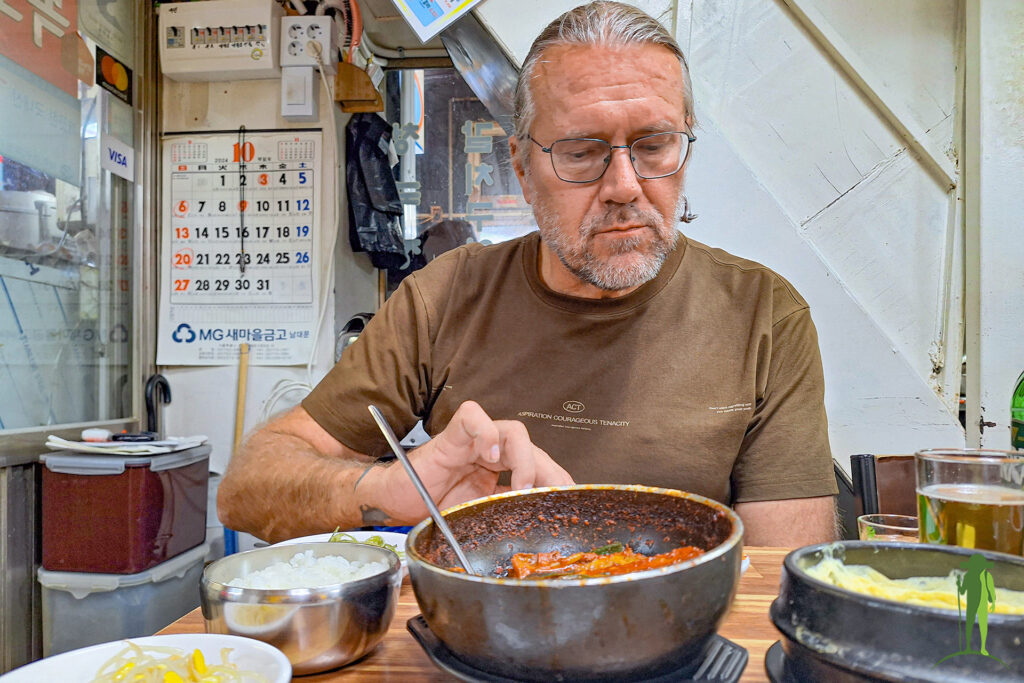
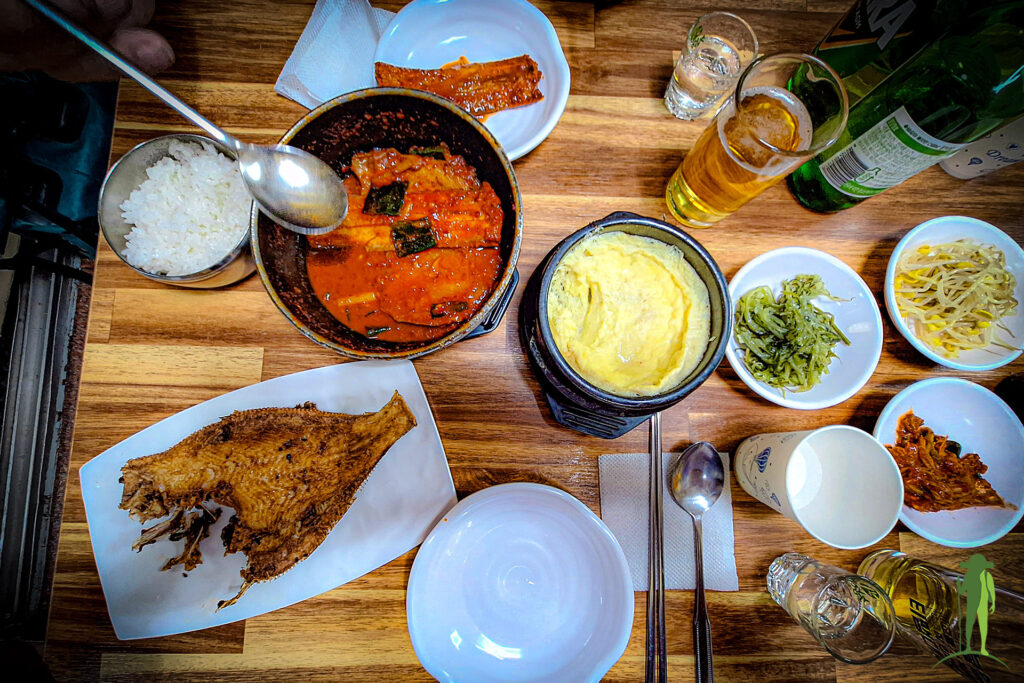
#6. Try Korean Barbecue and Street Food
Your trip to Seoul is not complete without having Korean barbecue. This popular social activity fosters cooperation and camaraderie amidst the sounds of meat sizzling and glasses clinking. You can choose between sirloin and short rib, pork belly and pig skin, marinated or not. Go with gas or a charcoal grill, it’s up to you. The type of grill pan also varies depending on the type of meat that you are cooking.
And, you can’t have a Korean meal without banchan, various small side dishes that are served along with a bowl of cooked rice for each person. These are usually set in the middle of the table, or around the communal grill if the space is limited, to be shared. It is believed that banchan was brought about by the ban of meat during the Three Kingdoms period, when the nation was strongly influenced by Buddhist vegetarianism. By the time the Mongols invaded, the consumption of vegetable-based dishes had been imprinted on the Korean psyche that the people continued with their usual diet despite the lifting of the ban.
Eating street food is another must-do while in Seoul. While it has become trendy in contemporary Korea, the humble origins of Korean street food are the same as in any other country: They were created to provide sustenance to low-income individuals. Before the Korean War, most of the street food sold at stalls were steamed bread filled with red bean paste (jjinppang) and steamed buns with either a meat or a vegetable filling (hoppang). Tteokbokki (spicy rice cake) and gimbap (Korean seaweed rice rolls) were eventually added to the repertoire in the 1970s.
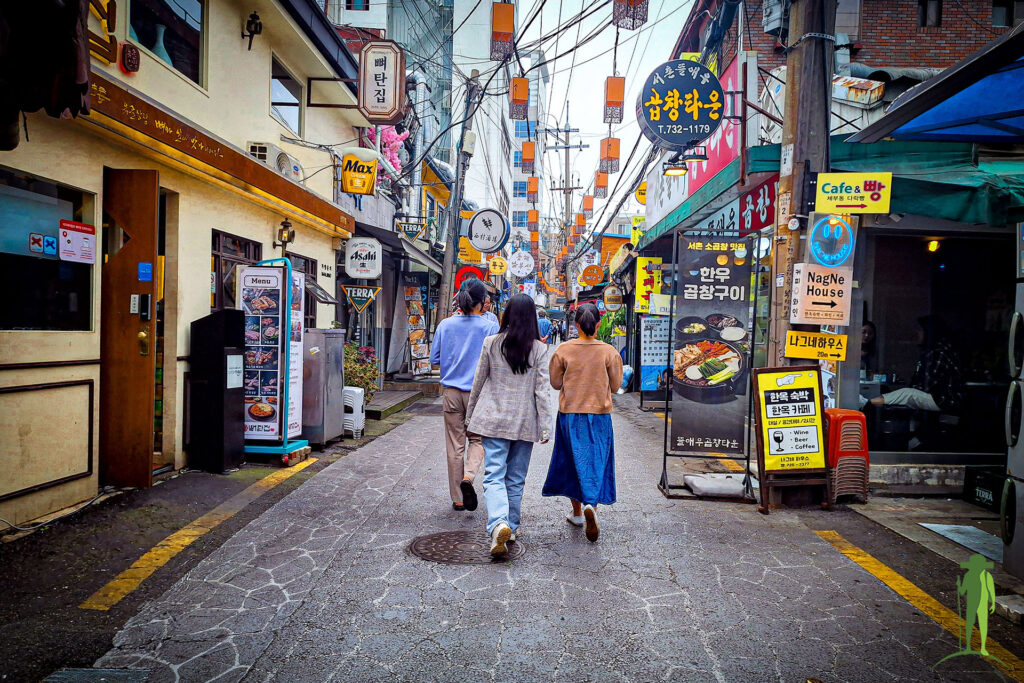
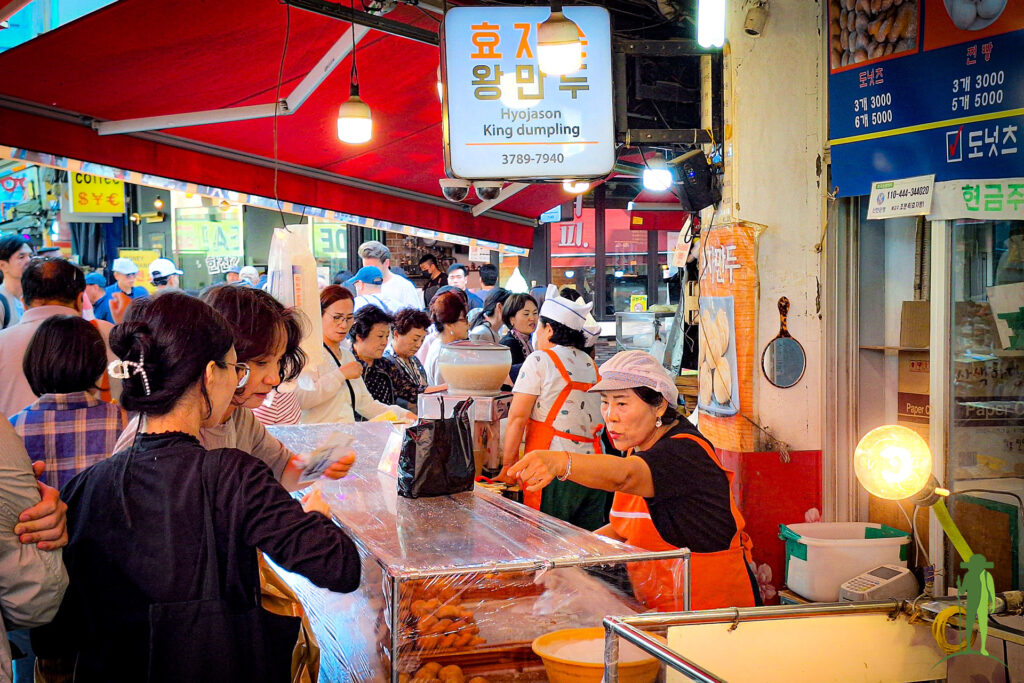
WHAT WE DID:Tried to Cram as Much Food as Possible in Our Small Stomachs
We’re not big eaters, and we can only eat so much. On a normal day, we usually have a light lunch in order to enjoy a heavier dinner. At times, we even skip lunch. We almost never eat breakfast unless it’s brunch. Our routine is a little different when we’re traveling.
Here’s a list of the Korean dishes that we tried in different places on our 4 full days (5 nights) in Seoul, in chronological order:
- Fishcake soup (eomok guk) for dinner, pictured below
- Beef patties (tteokgalbi) on rice for lunch
- Korean barbecue dinner – short rib and beef tartare
- Cutlassfish stew and grilled plaice for lunch
- Fried chicken dinner (Winner, winner!)
- Scallion and seafood pancake (haemul-pajeon) for lunch
- Buckwheat noodles (bibim-naengmyeon) and blood sausage (soondae) for dinner
- Bibimbap lunch
- Final Korean barbecue dinner – sirloin and beef tartare
Some Korean snacks and street food that we managed to stuff into our bursting bellies:
- Fish-shaped pastry (bungeoppang), pictured below
- Twisted donuts (kkwabaegi)
- Sweet pancakes (hotteok)
- Steamed buns with red bean paste (jjinppang)
- Banana milk
- We didn’t have any room left for tteokbokki, unfortunately.
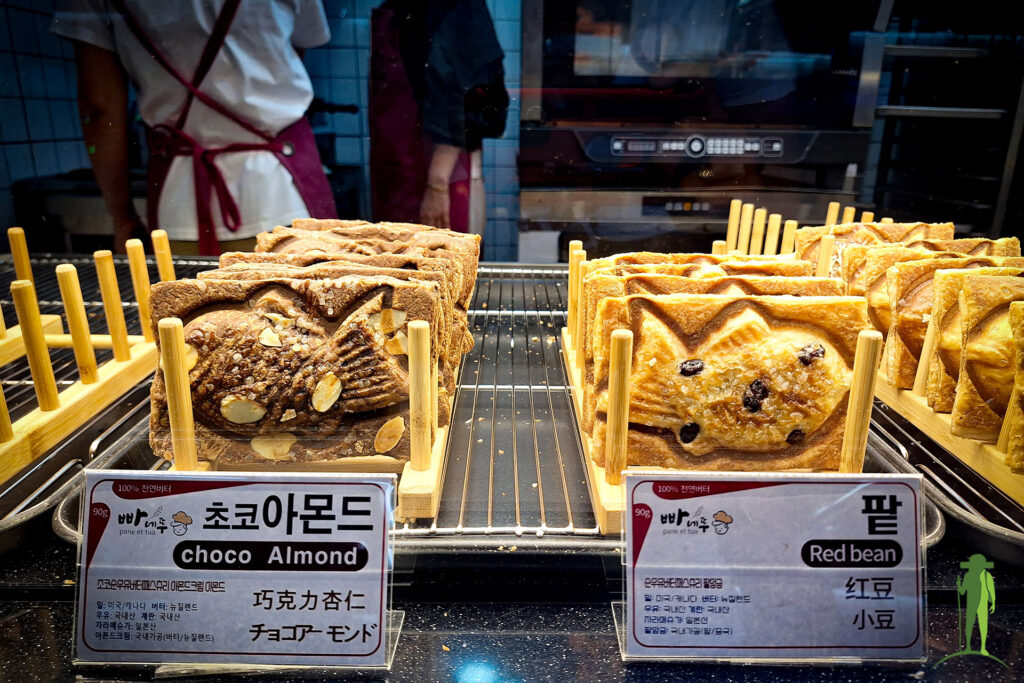
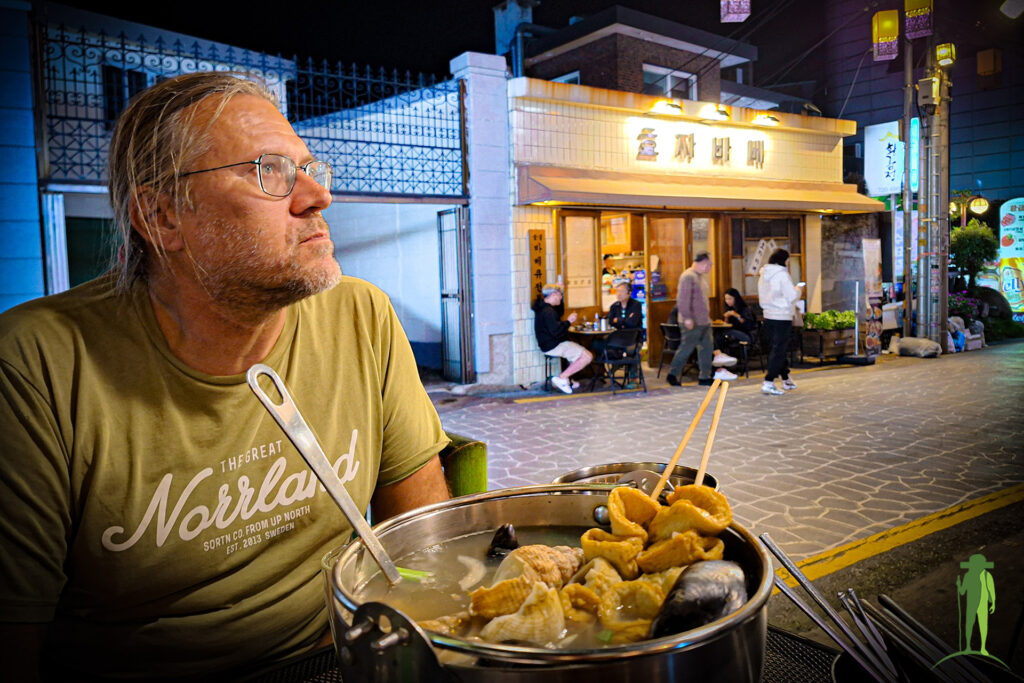
#7. Take to the Shopping Districts and Cafes
Shopping fanatics will enjoy Seoul. From luxurious to low-key, Seoul has something for every type of shopper. Famous for designer brands and flagship stores, Apgujeong in Gangnam District takes your shopping experience to another level with its opulence and artistry. The gingko-lined street (Garosu-gil) in nearby Sinsa is a great extension in the autumn, when the golden leaves begin to fall off. If you’re looking for something more affordable, head to Hongdae. The buskers and street dancers give Hongdae a youthful and vibrant vibe. When you’re not browsing popular local brands of streetwear, you can watch the various street performances while enjoying street food. If you’re aiming for brands that tourists like, Myeondong is for you.
For something traditional, head to Insadong, which offers a variety of shops selling ancient Korean arts and crafts. The art galleries are also worth a visit. If you’re a K-beauty enthusiast, take home as many face masks as you can in Seongsudong. Nothing beats Koreans when it comes to skincare.
Seoul has an impressive cafe culture. The competition is fierce and each one aims to stand out through creative decor, unique flavors, and themed installations. It’s hard to find a street without a cafe in it, so be sure to check out a few while you’re in town. Social media will give you a few recommendations.
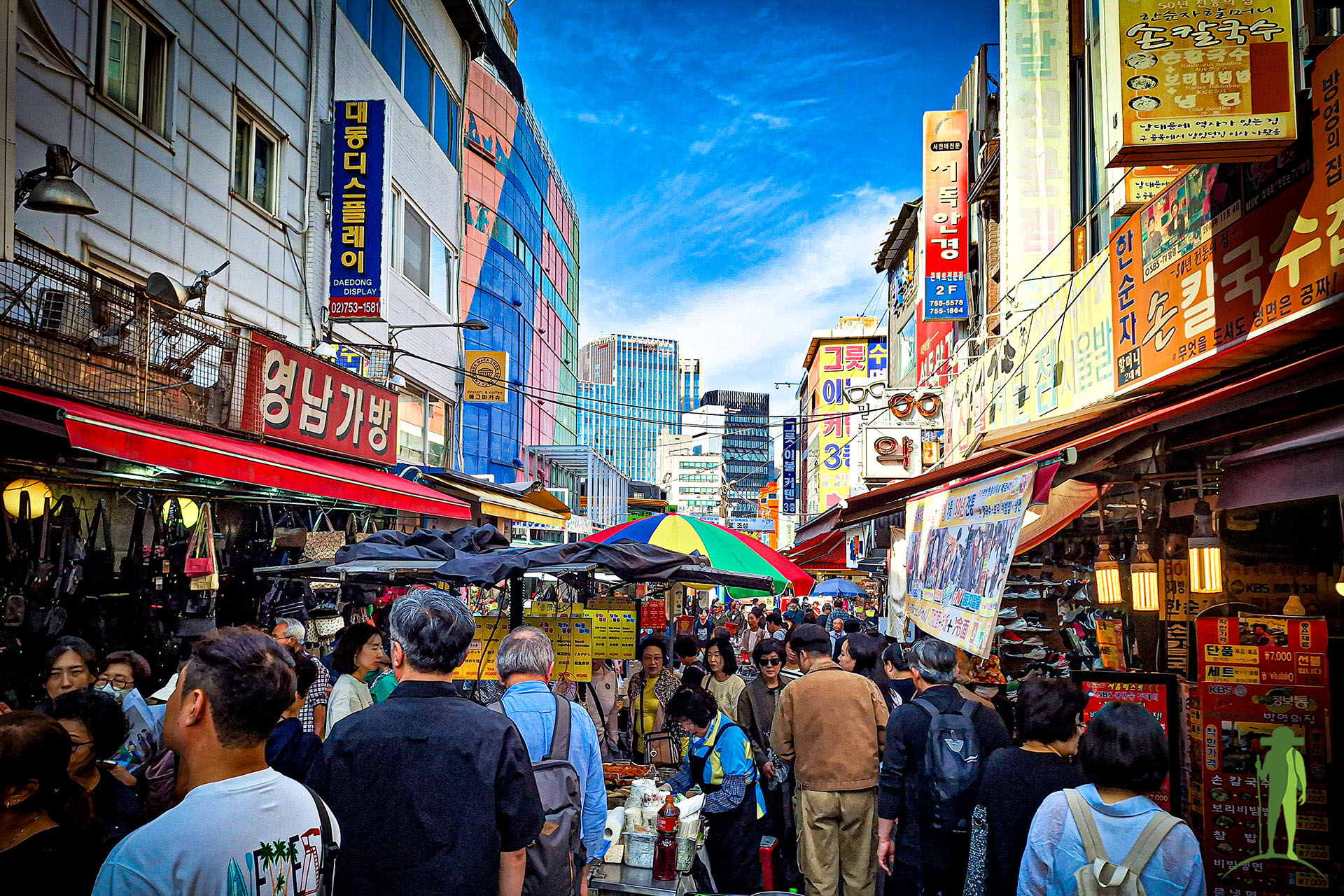
WHAT WE DID:Checked Out the Convenience Stores and Sampled Korean Liquor
It doesn’t look like it, but we’re trying to adopt a minimalist lifestyle. Instead of taking to the shops, we went in to convenience stores to get a feel of the local vibe. These corner shops offer a wide array of products, from commuter passes and chargers to snacks and soju.
Speaking of soju, we decided to try makgeolli in a hole-in-the-wall instead of sitting at a cafe. We live in a coffee-growing country, so we have access to good coffee back home. What we are missing is the cloudy, unpasteurized rice wine that you find in many variations in South Korea.
Makgeolli has been brewed since the Three Kingdoms and is considered the oldest alcoholic beverage in Korea. It is made from rice using a traditional Korean fermentation starter. Makgeolli is often considered a social beverage rather than hard liquor due to its low proof drink of 6-9% alcohol by volume. Artisan makgeolli, like the one we tasted, can go up to 30 proof. We paired our drink with haemul-pajeon (pancakes made with scallions and seafood).
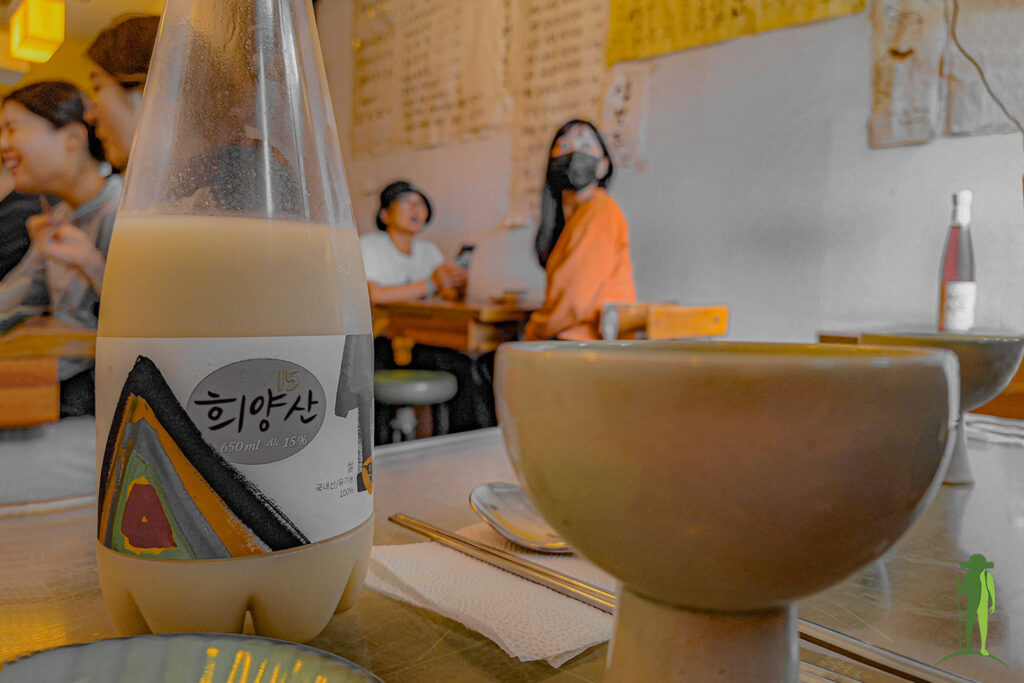
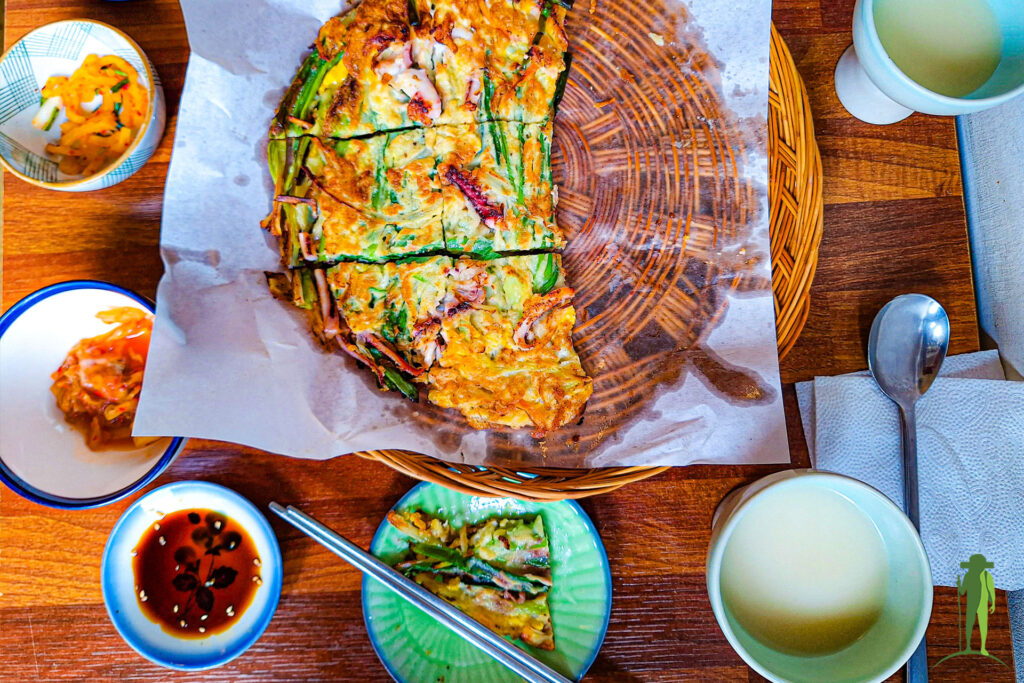
#8. Go For a Hike in Bukhansan National Park
One of the things that we like about Seoul is that it has a lot of green areas where you can enjoy nature or work on your physical fitness. Surrounded by several mountains, just walking around Seoul’s hilly terrain on a regular basis will help you burn those calories. The capital has more than 20 national parks and nature zones. Hiking is a popular pastime of Koreans, and hikers in full colorful gear are hard to miss on weekends.
Situated on the northern edge of Seoul, Bukhansan National Park is suitable for hikers of all levels. Hiking trails are classified into 5 levels: Easy, Moderate, Intermediate, Advanced, and Expert. You can choose to hike the different peaks, starting from Mangnyeongdae Peak at 800 meters (2,625 feet) and going as high as Baegundae Peak at 830 meters (2,725 feet). The park is home to more than 3,000 species of plants and animals, as well as numerous historic Buddhist temples.
WHAT WE DID:Explored Suseong-dong Valley
Bukhansan National Park made it to the Guinness Book of World Records as the ‘Most Visited National Park per Unit Area‘ with an annual visitor count of around 5 million. As we are used to being out in nature by ourselves, this popular attraction didn’t land on our list. Instead, we ventured out of our neighborhood and walked to nearby Suseong-dong Valley.
Situated at the foot of Inwangsan Mountain, Suseong-dong Valley provides a quick getaway from the hustle and bustle of the urban jungle. It is depicted in the painting “Jangdong Palgyeongcheop,” or Jangdong Eight Scenic Views, by the famous Korean landscape painter, Jeong Son (1676-1759; also known by his artist name Gyeomjae). Grand Prince Inpyeong of the Joseon dynasty (1622–1658), a renowned calligrapher, supposedly visited frequently to draw inspiration from the breathtaking views.
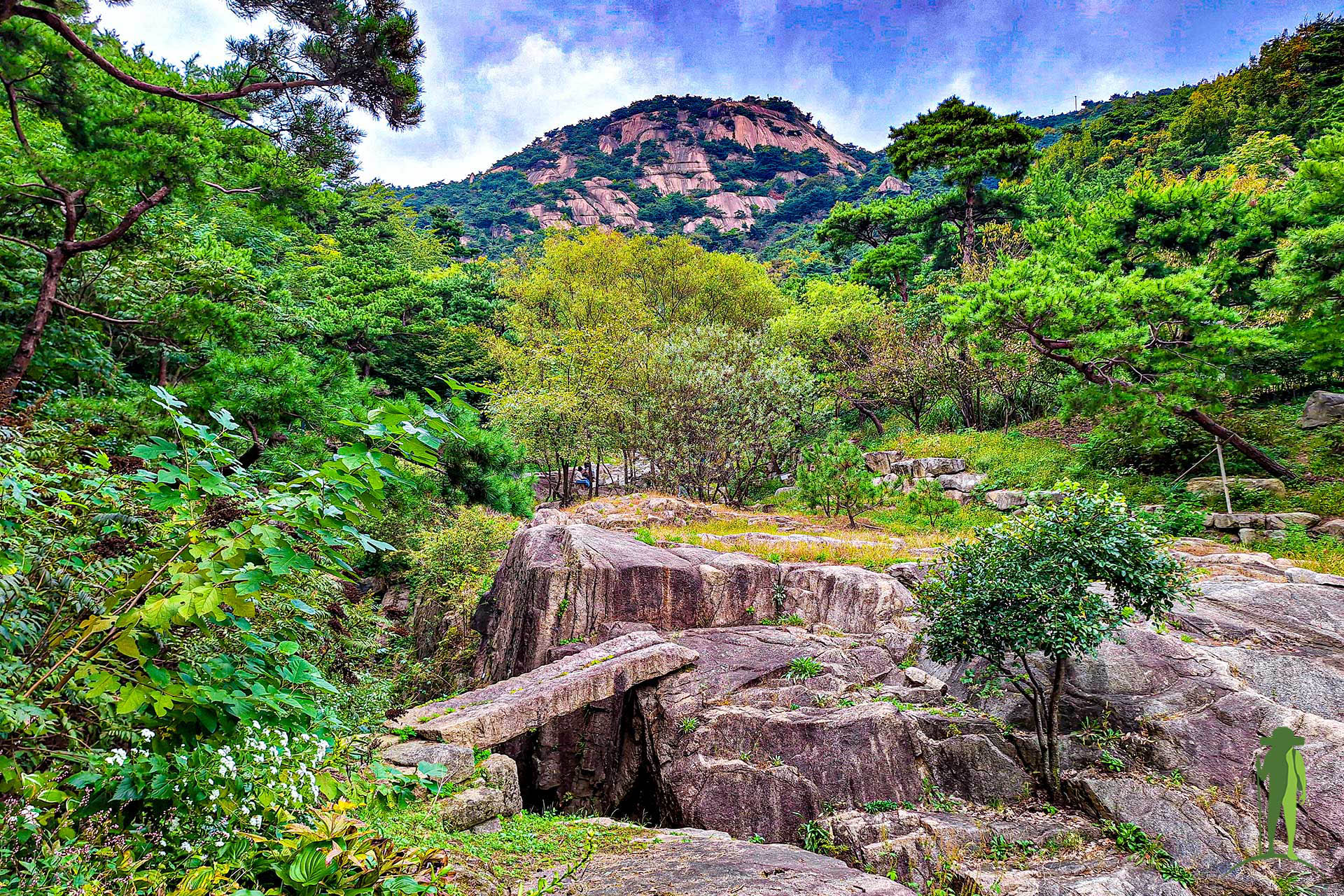
#9. Stand Tall at the Lotte World Tower
A futuristic skyscraper that boasts 123 stories, Lotte World Tower is the tallest building in South Korea, and one of the tallest in the world. Its high-speed, double-deck elevators will take you up to Seoul Sky on floors 117-123 in less than a minute. The glass-floored panoramic observation deck lets you enjoy breathtaking views of the city below, especially at sunset. For an added thrill, go up 10+ flights of stairs to the Sky Bridge, where you will be kitted up in safety gear and escorted across to the other side.
WHAT WE DID:Crossed the Han River on Foot
We didn’t want to queue up to enter the vertical city of Lotte World Tower. We preferred to enjoy wide-open views of the Seoul skyline while traversing the length of Jamsil Bridge to get across the Han River. The path from the subway station to the elevator that takes you up to the bridge is lush with greenery. There are benches to sit on and places to do a bit of exercise. Close to the bridge itself, there is a park used by joggers, cyclists, and older people who like stay fit.
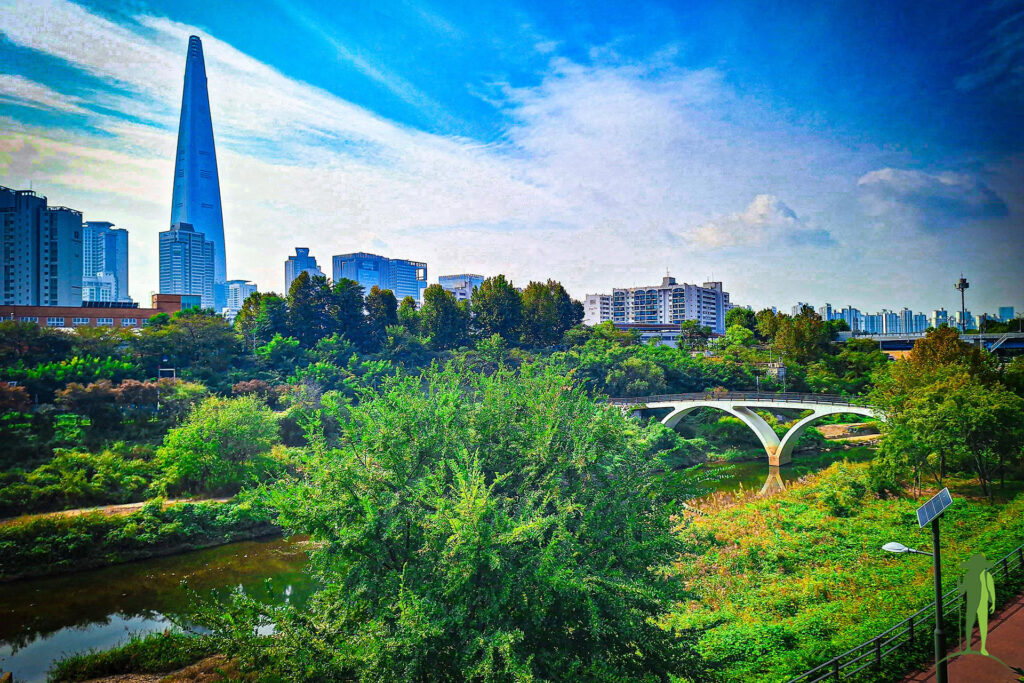
Left: View of the Lotte World Tower from Jamsil Metro Station
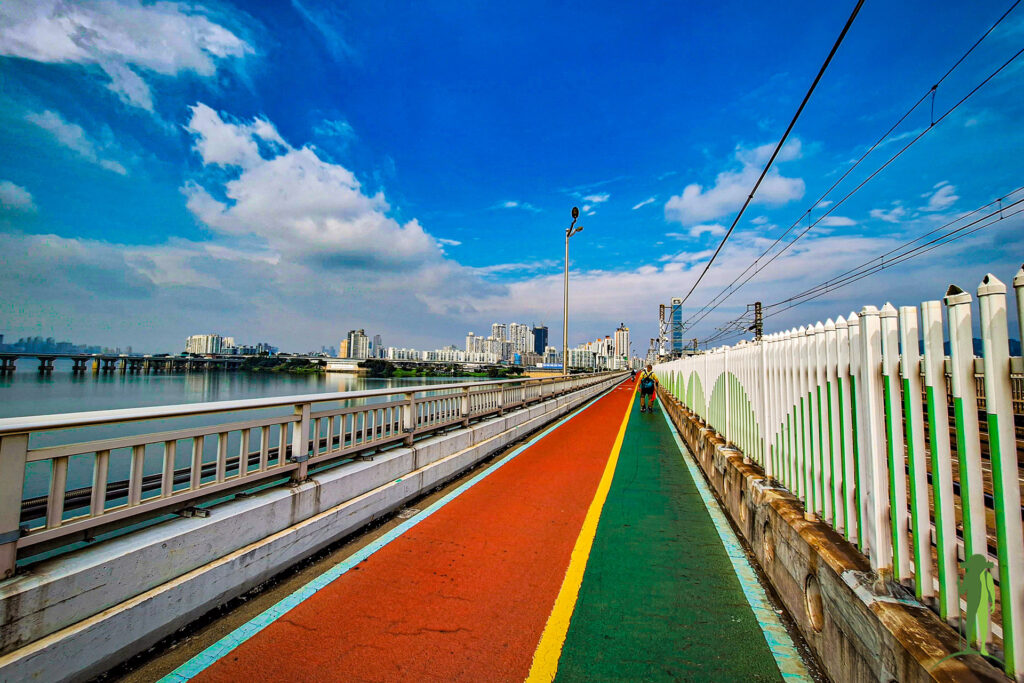
Right: Crossing the Han River on the Jamsil Bridge from south to north
#10. Take a Trip to the DMZ
WHAT WE TRIED TO DO:Travel to the Province
We wanted to visit a village within the DMZ because we were specifically interested in their way of life. Since Daeseong-dong lies less than 2 km (about one mi) away from Kijon-dong, a village in the North Korea portion of the DMZ, security is tight in this area. Non-residents of South Korea are denied entry and even visitors invited to the village must apply for a military escort two weeks in advance. Due to lack of time and lack of contacts, we had to put that plan on the back burner.
Our plan B was to head to the coastal city of Sokcho in Gangwon Province. Bordered by the Military Demarcation Line on the north, going to Gangwon was our attempt to get as close as possible to the DMZ. We thought that we could try some fresh seafood while we were there… Unfortunately, we could not use our foreign credit card to buy the bus tickets online, and the earlier departures were already full by the time we got to the bus station. We saved this one for next time as well.
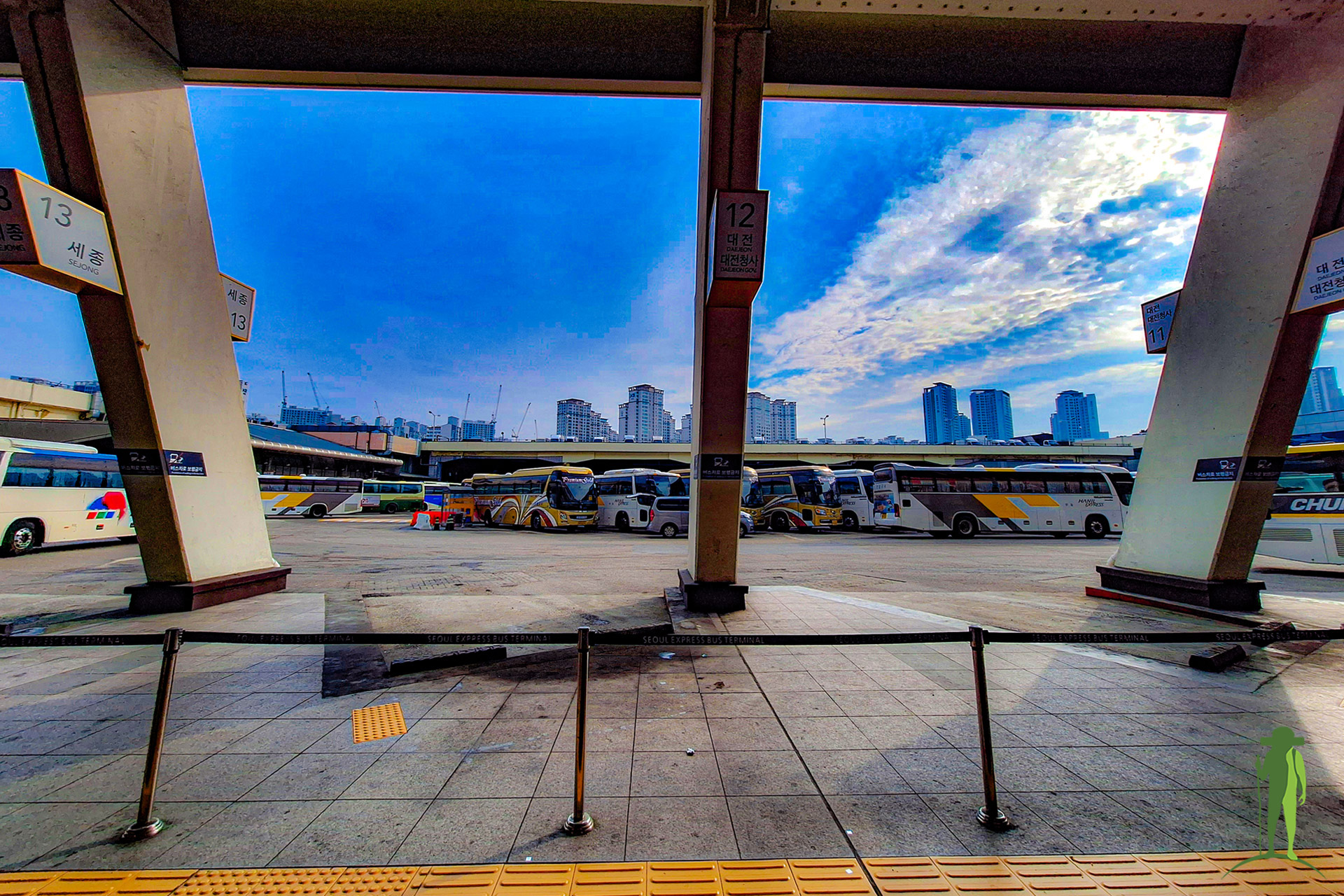
Any Other Things to Do in Seoul?
If you have time to spare, why not join the locals in some of their favorite things to do in Seoul:
- Soak and socialize in a jjimjilbang (bathhouse).
- Belt out your karaoke repertoire in a noraebang (singing room).
- Steep yourself in tradition in a teahouse.
- Participate in ceremonies at a Buddhist temple.
- Pay your respects to Korea’s ancestors at a memorial shrine.
Stay tuned for our list of things to do at Incheon International Airport if you intend to have just a layover in Seoul.
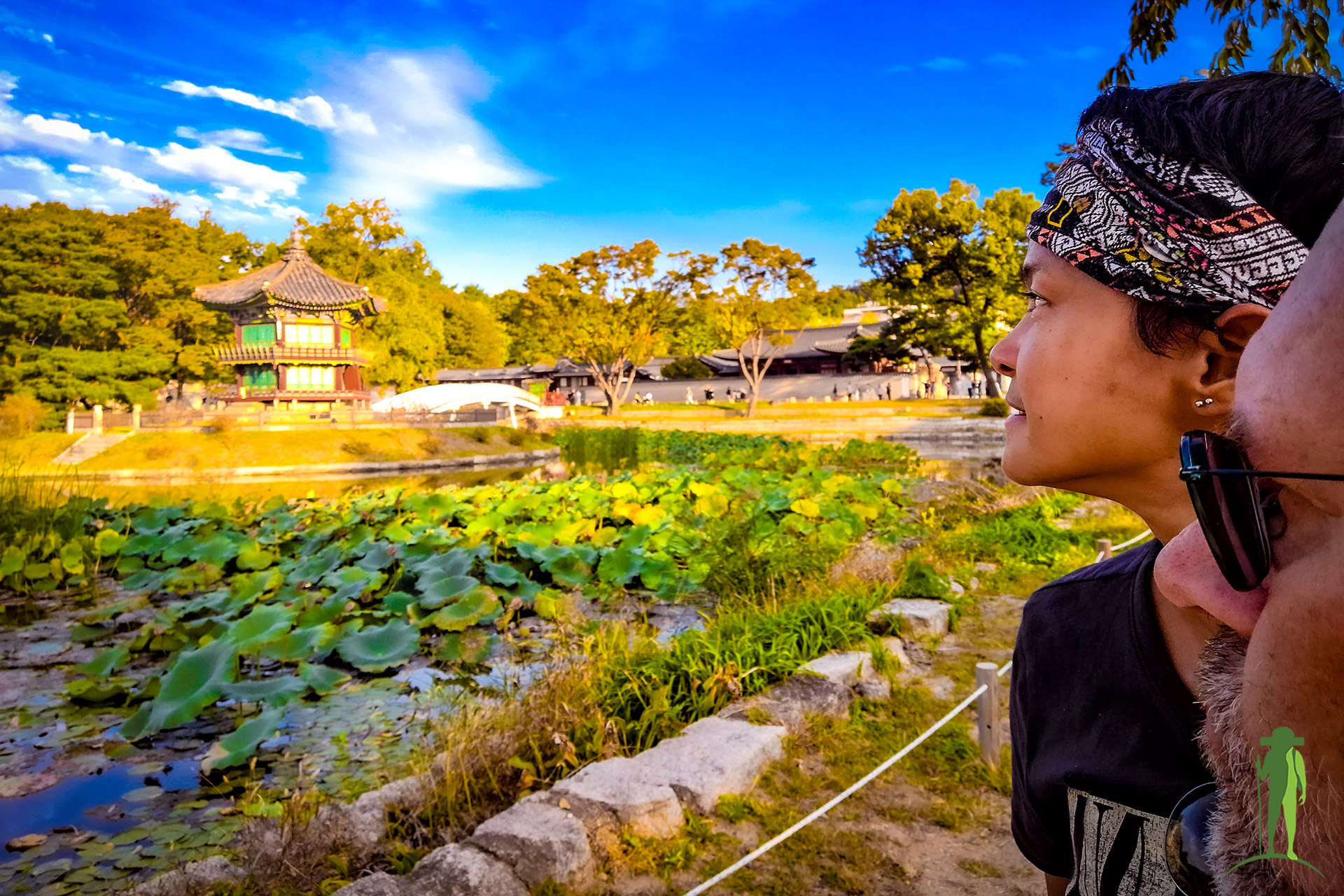
More From Our Blog
Kalinga Batok: Journeying into the Heart of the Highlands
As what has become customary for us, Sten and I came up with a vague plan of visiting the mountainous northern region of the Philippines, where rice fields and vegetable crops cover giant staircases that lead up to the skies. After completing a cursory research, we set out in our loaner A/T SUV and left the busy streets of Manila. A few missed turns later, we found ourselves cruising along the expressway. I listened to my brother’s collection of music from the unfortunate 80’s while Sten snoozed in the passenger seat.
The Double-Edged Smartphone
We were born in the advent of personal computers. As Generation X-ers, we are more familiar with Atari, floppy disks, and DVD players than emojis, reels, and hashtags. Our fondest childhood memories include walking over to the neighbor’s house next door, hanging out with friends at the local grocer, and playing outside. Rain, shine, or snow, it didn’t matter to us because we loved the outdoors. When we stayed in, by choice or otherwise, we built a fort, played board games, and watched television. Most activities were communal events back then.
Choosing the Right Tour Operator
With our love for travel and having worked for various tour companies in the last 15+ years, we have experienced the travel industry from the perspective of a tourist as well as from that of a tour operator. Over the years, we have developed our own guidelines when it comes to choosing the right tour company. We understand that we may not follow the same standards as that of others. After all, each one of us is different.
